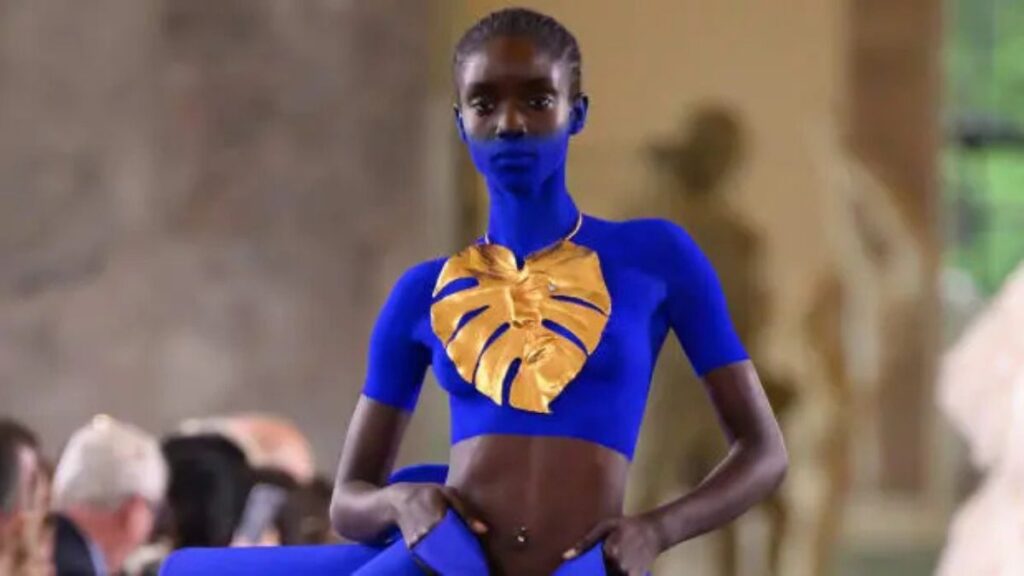Introduction to Gelboodu and its Origins
Gelboodu is more than just a design concept; it’s a vibrant expression of cultural heritage. Originating from the rich tapestry of traditional art, this unique style has transcended its initial boundaries to make waves in modern fashion. As designers look for inspiration in unexpected places, gelboodu stands out as a powerful symbol that marries artistry with contemporary aesthetics.
But what exactly is gelboodu? This intricate art form encapsulates stories, emotions, and traditions within its elaborate patterns and motifs. Its deep roots allow it to resonate not only with those who appreciate history but also with today’s trendsetters looking for authenticity in their creations.
Dive into the world of gelboodu as we explore how this ancient influence shapes modern design across various platforms—bridging gaps between past and present while inspiring artists globally. From traditional artisans to cutting-edge fashion designers, the impact of gelboodu is undeniably profound and far-reaching.
The Role of Gelboodu in Traditional Art and Design
Gelboodu, with its vibrant colors and intricate patterns, serves as a significant cornerstone in traditional art. Each design tells a story, deeply rooted in cultural heritage and regional influences.
Artisans meticulously craft Gelboodu pieces using age-old techniques passed down through generations. The process itself is an art form, showcasing the skill and dedication of the artists involved.
In traditional settings, Gelboodu motifs often adorn textiles, pottery, and even architectural elements. These designs are not merely decorative; they embody spiritual beliefs and historical narratives.
The use of Gelboodu transcends mere aesthetics. It reflects community identity and pride while fostering connections among people who share similar cultural backgrounds.
This rich tradition promotes social cohesion within communities. With every stroke or pattern incorporated into their work, artists preserve history while simultaneously celebrating creativity through this distinctive style.
The Evolution of Gelboodu in Modern Fashion
The evolution of gelboodu in modern fashion showcases its remarkable adaptability. Once limited to traditional craftsmanship, it has now infiltrated contemporary wardrobes.
Designers are infusing gelboodu elements into their collections, creating a fusion of heritage and innovation. This blending resonates with consumers seeking unique pieces that tell a story.
Prints inspired by gelboodu motifs adorn high-end garments and accessible streetwear alike. The fluid lines and bold colors capture attention, making statements on runways around the globe.
Sustainability plays a role too. Many brands emphasize ethically sourced materials while honoring the art form’s cultural significance.
Collaboration between artisans and fashion houses further elevates its presence in haute couture. Each piece becomes a conversation starter about tradition meeting modernity, reinforcing the timeless appeal of gelboodu within today’s dynamic fashion scene.
Contemporary Artists and Designers Inspired by Gelboodu
Contemporary artists and designers are increasingly drawing inspiration from gelboodu, a traditional art form rooted in vibrant colors and intricate patterns. This unique style has captured the attention of many creators seeking to blend cultural heritage with modern aesthetics.
One notable figure is designer Amina Khan, who incorporates gelboodu motifs into her textile collections. Her work celebrates the rich history while appealing to contemporary tastes.
Similarly, visual artist Raj Patel experiments with digital interpretations of gelboodu designs. His pieces merge traditional techniques with technology, creating dynamic art that resonates across cultures.
Fashion labels have also embraced this trend. Brands like Ethnic Chic showcase garments adorned with gelboodu-inspired prints, offering a fresh perspective on classic styles.
These contemporary interpretations breathe new life into an age-old tradition, showcasing its versatility and relevance in today’s design landscape. The fusion of past and present continues to inspire countless creators worldwide.
Impact of Gelboodu on the Global Fashion Industry
The impact of gelboodu on the global fashion industry is both profound and far-reaching. Designers are increasingly integrating this vibrant art form into their collections, often blending traditional techniques with modern aesthetics.
Fashion houses around the world have embraced gelboodu patterns for their bold colors and intricate designs. This infusion not only enhances visual appeal but also pays homage to cultural heritage.
Moreover, gelboodu has inspired sustainable practices in fashion. Many brands source materials locally, emphasizing craftsmanship over mass production. This shift promotes ethical consumption while celebrating artistic expression.
Consumers are now more aware of the stories behind what they wear. The incorporation of gelboodu resonates with those seeking authenticity and meaning in their clothing choices.
As a result, gelboodu transcends mere decoration; it fosters a dialogue between past traditions and contemporary trends, influencing styles across various markets globally.
Challenges and Criticisms Surrounding the Use of Gelboodu in Design
The use of gelboodu in design is not without its challenges. Some critics argue that the trend risks cultural appropriation. Designers who borrow from this traditional art form often lack a genuine connection to its roots.
Another concern lies in authenticity. As gelboodu becomes popular, there’s a danger of losing its original meaning and significance. Mass production can strip away the intricate craftsmanship that defines true gelboodu.
Additionally, sustainability issues arise when traditional methods are overshadowed by industrial practices. The push for fast fashion may undermine the delicate balance between preserving heritage and meeting commercial demand.
Artisans often face pressure to conform to modern aesthetics rather than staying true to their unique styles. This tension raises questions about identity and representation within contemporary design spaces, highlighting an ongoing struggle between innovation and tradition.
Conclusion: The Enduring Legacy of Gelboodu in Art and Fashion
The legacy of Gelboodu resonates deeply within the realms of art and fashion. Its vibrant patterns, rich history, and cultural significance continue to inspire a new generation of creators. As artists and designers weave Gelboodu into their work, they not only pay homage to its origins but also reinterpret it for contemporary audiences.
This fusion of traditional motifs with modern aesthetics creates a dialogue between past and present. The global fashion industry has embraced this trend, showcasing how Gelboodu can transcend boundaries while celebrating heritage. From high-end runways to streetwear collections, its influence is unmistakable.
As we move forward in our ever-evolving design landscape, the enduring appeal of Gelboodu serves as a reminder of the beauty found in tradition. It highlights the importance of preserving cultural narratives while encouraging innovation. Those who draw inspiration from Gelboodu contribute not just to fashion but also to a broader appreciation for artistic expression across cultures.
With each new creation inspired by this unique art form, we witness an ongoing celebration that keeps its spirit alive—an inspiring journey from ancient traditions to modern interpretations that captivate hearts worldwide.






